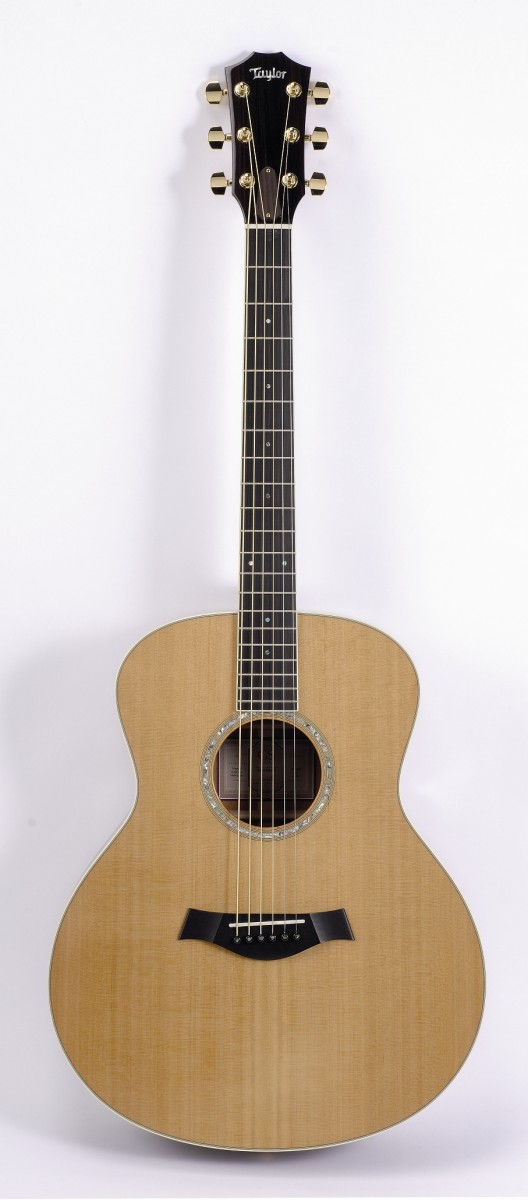MusicRadar Verdict
The GS has depth, warmth, power, balance and sweetness in equal quantities.
Pros
- +
Aesthetically balanced proportions. Tight, snappy tone - ideal for fast fingerpicking.
Cons
- -
Sound isn't as adaptable as the GSRS. The neck's finish.
MusicRadar's got your back
Taylor's Grand Symphony (GS) guitar sonically bridges the gap between its hugely popular grand auditoriums and its dreadnoughts and jumbos. Conceptualised by Bob Taylor and developed by senior designers Ed Granero and Larry Breedlove (co-founder of Breedlove Guitars), the GS body takes the grand auditorium theme to the next logical step.
Slightly wider in lower bout and with a wider, higher waist than the GA, its soundbox shape and increased proportions are designed to add depth and power, without compromising midrange and treble clarity.
Overview
The basic GS Series comprises four identically constructed, purely acoustic models with virtually identical cosmetics, offering four different tonewood combinations. You may notice the rosewood/spruce review model we were supplied with has the Expression System option, but we're only discussing the guitar itself here.
Taylor has purposely separated the exclusively non-cutaway GS Series from its established, numerically coded range in order to distance them from the 'cutaway electro' theme that permeates the standard catalogue.
With generally understated appointments and one set price for all models, the idea is that you choose a GS purely for its specific tonal qualities, rather than the fact that one has fancier inlays or other features.
The neck's matt finish fails to bring out the depth of colour we see in the body panels, and so it might look better left natural. There's also a thin black perimeter seam around the back and the sides, flanking the body binding, and a plain black centre strip down the back.
This particular model also slipped through the quality control net with a couple of really rough frets.
Want all the hottest music and gear news, reviews, deals, features and more, direct to your inbox? Sign up here.
Sounds
The GS musters pleasant woodiness in the bass, but it's generally not as warmhearted in the lower registers. It has a gritty, snappy core mid-range sound and a penetrating top end.
If you favour crisp clarity over lushness, then this is the guitar for you. However, the scope of this instrument is impressive, proving equally sonorous no matter where on the neck you're playing.
This guitar embodies just the right 'note-spitting' dynamics to suit fast country-style fingerpicking, or some real Robert Johnson-style blues.
There's nothing else exactly like the GS out there, although Lowden offers similar tonewood choices. By today's standards, the price seems fair, and you'd have to commission a local luthier to get something equivalent for less.
